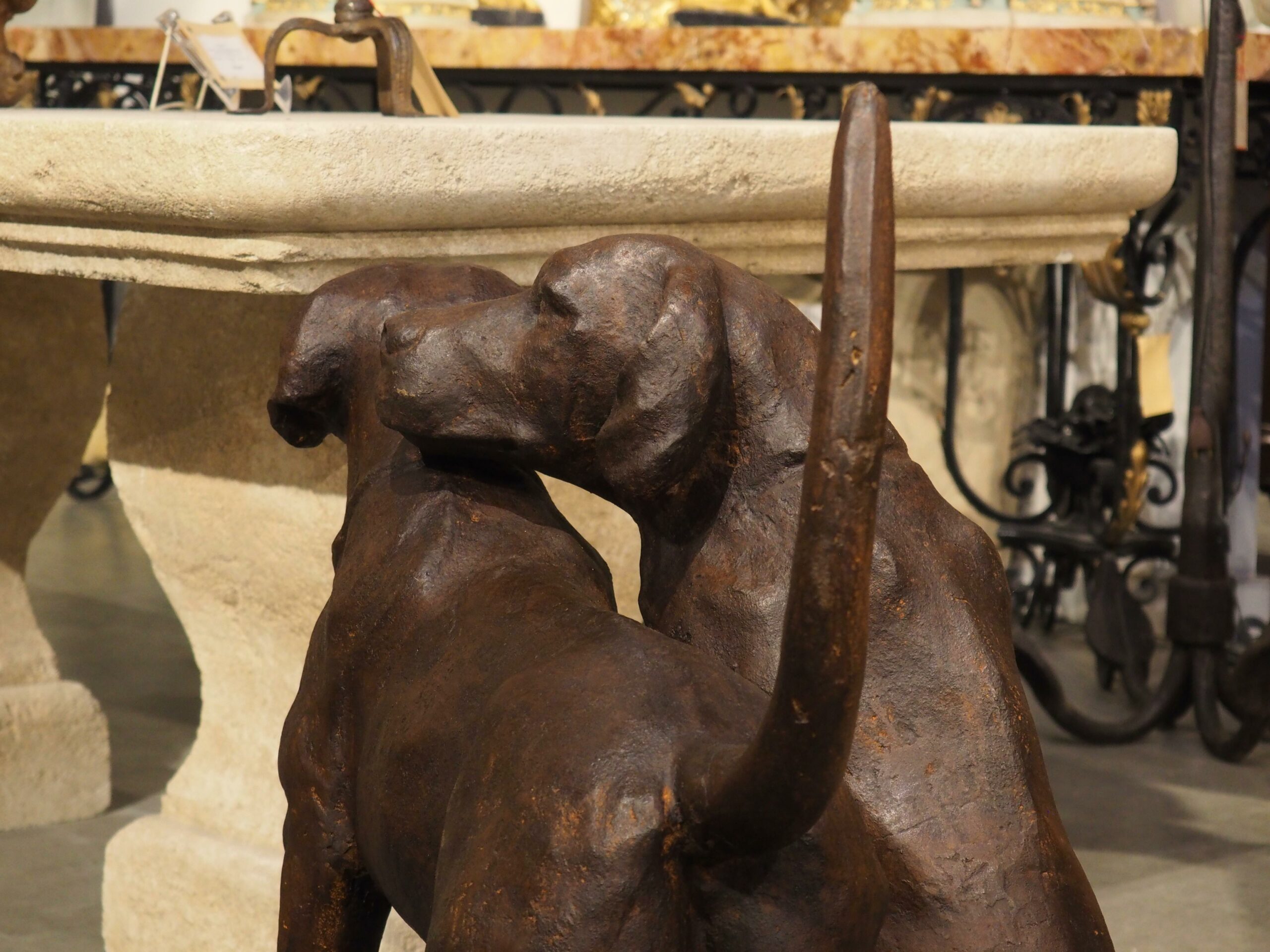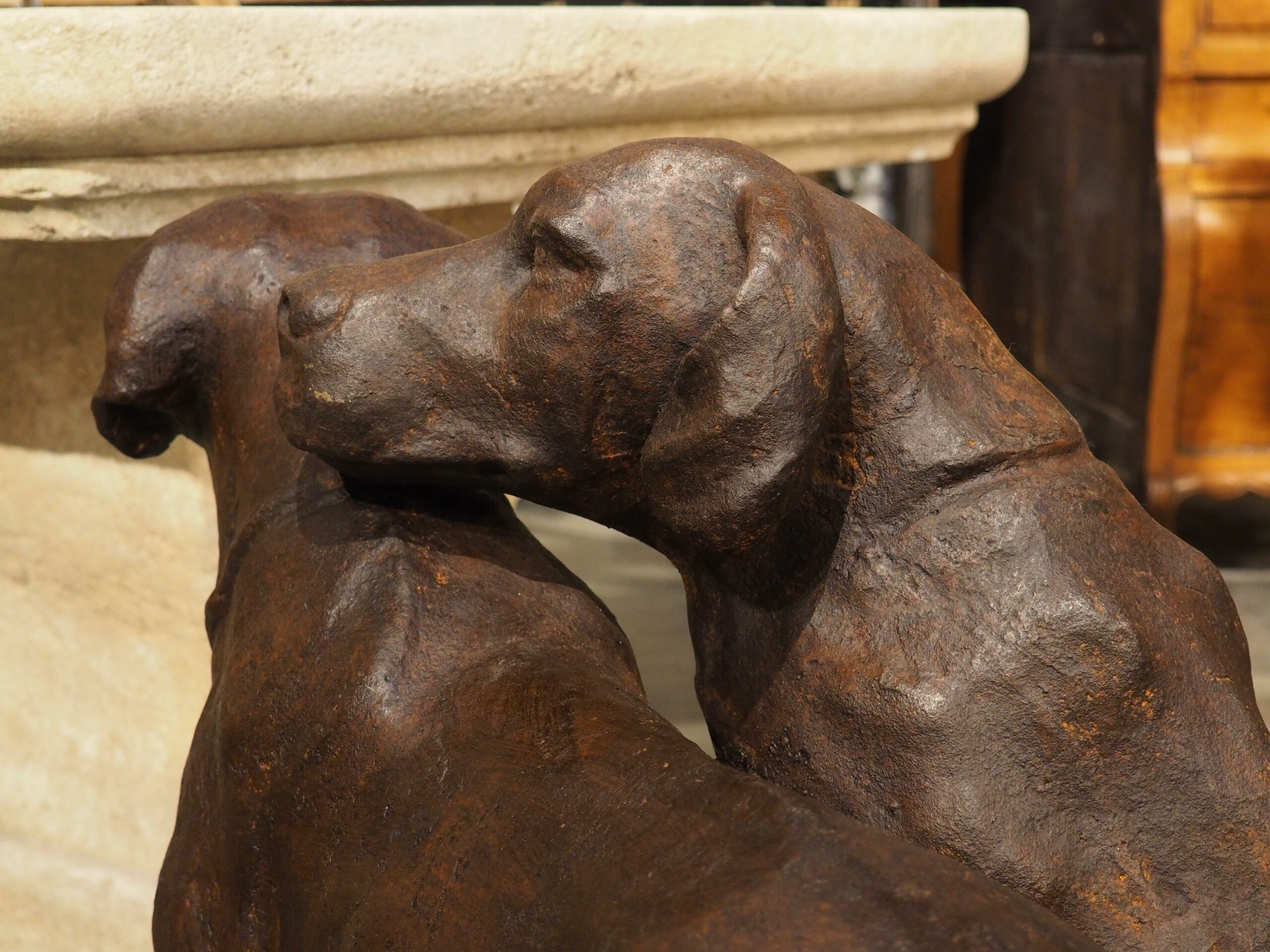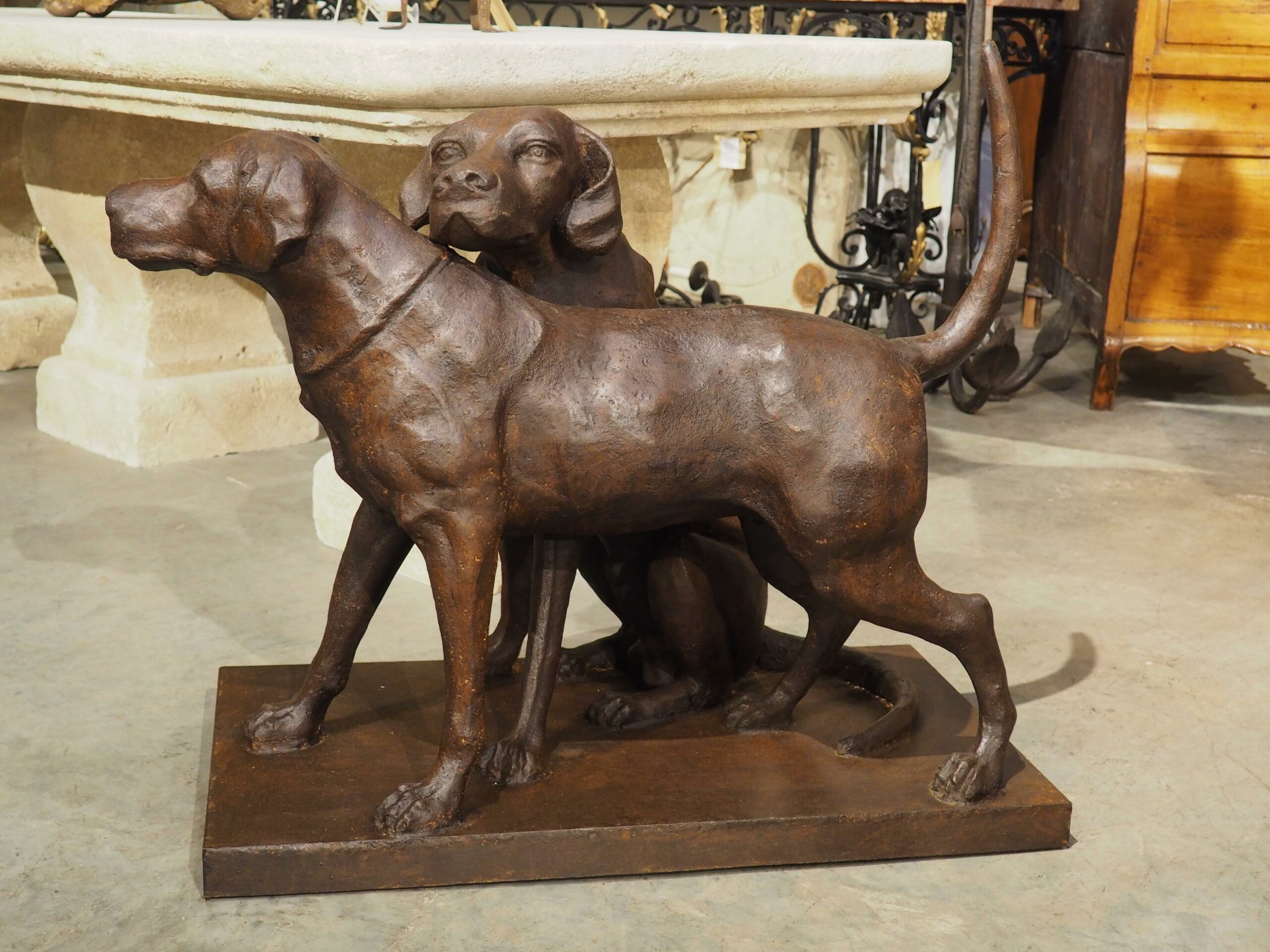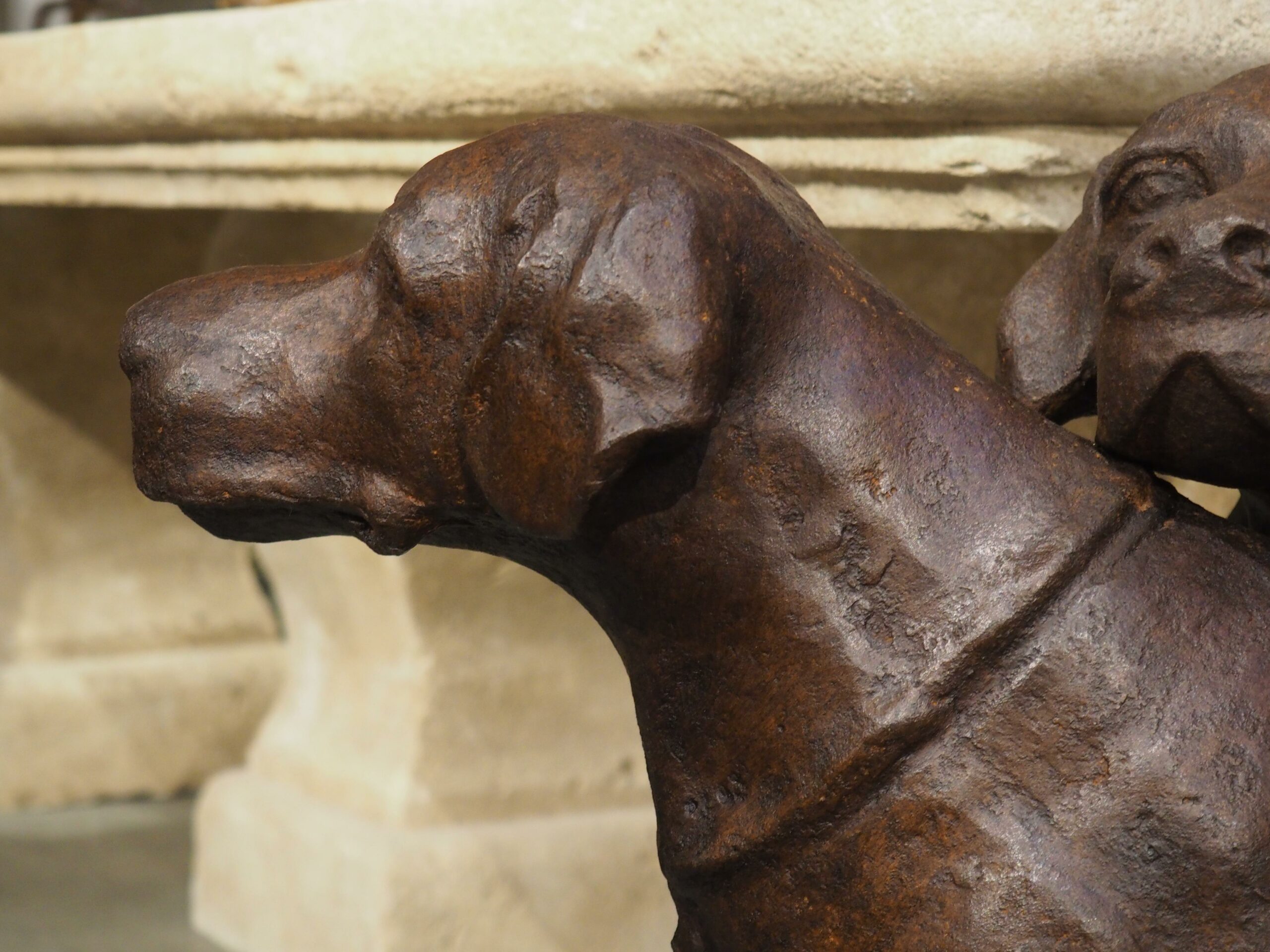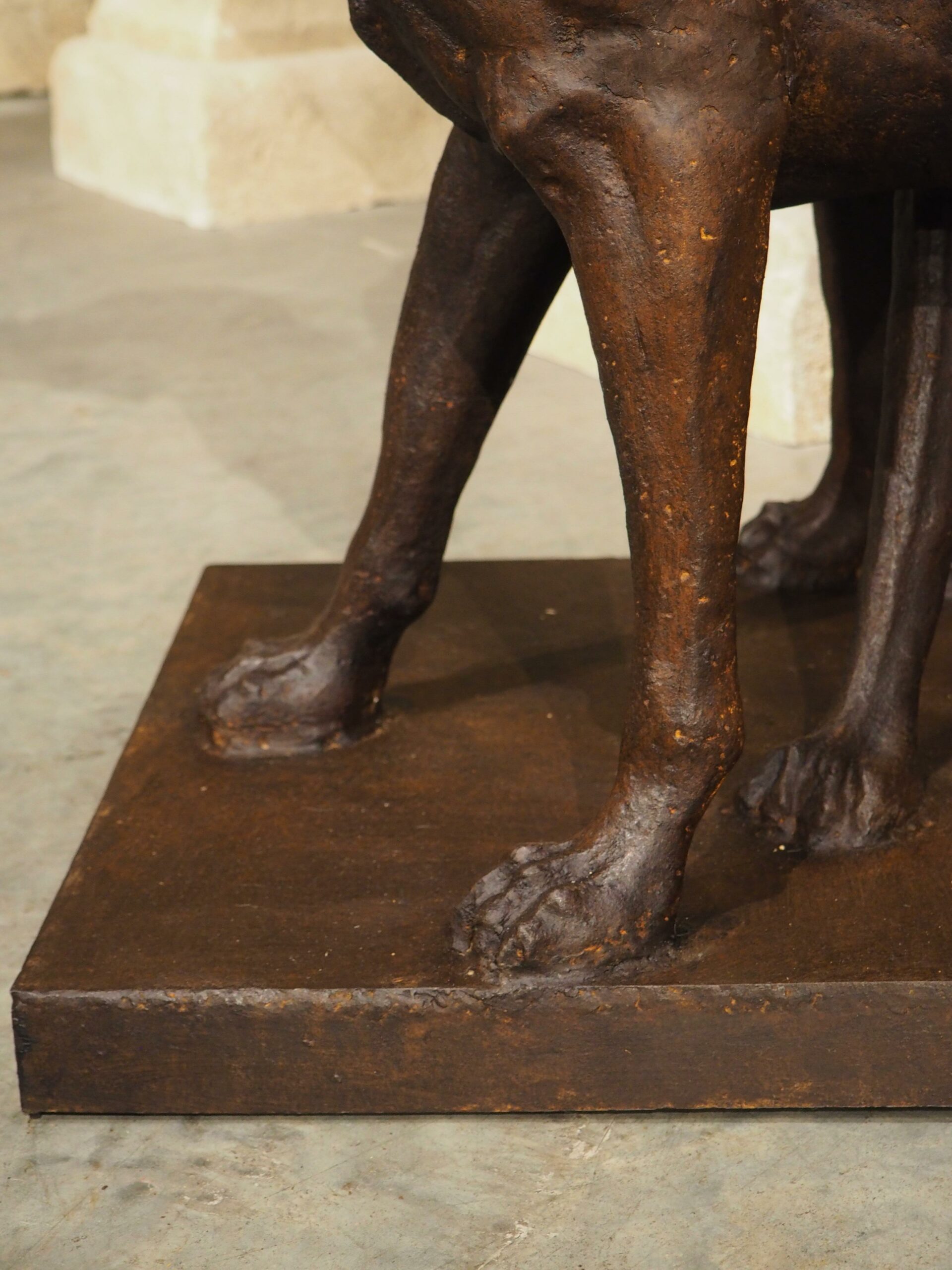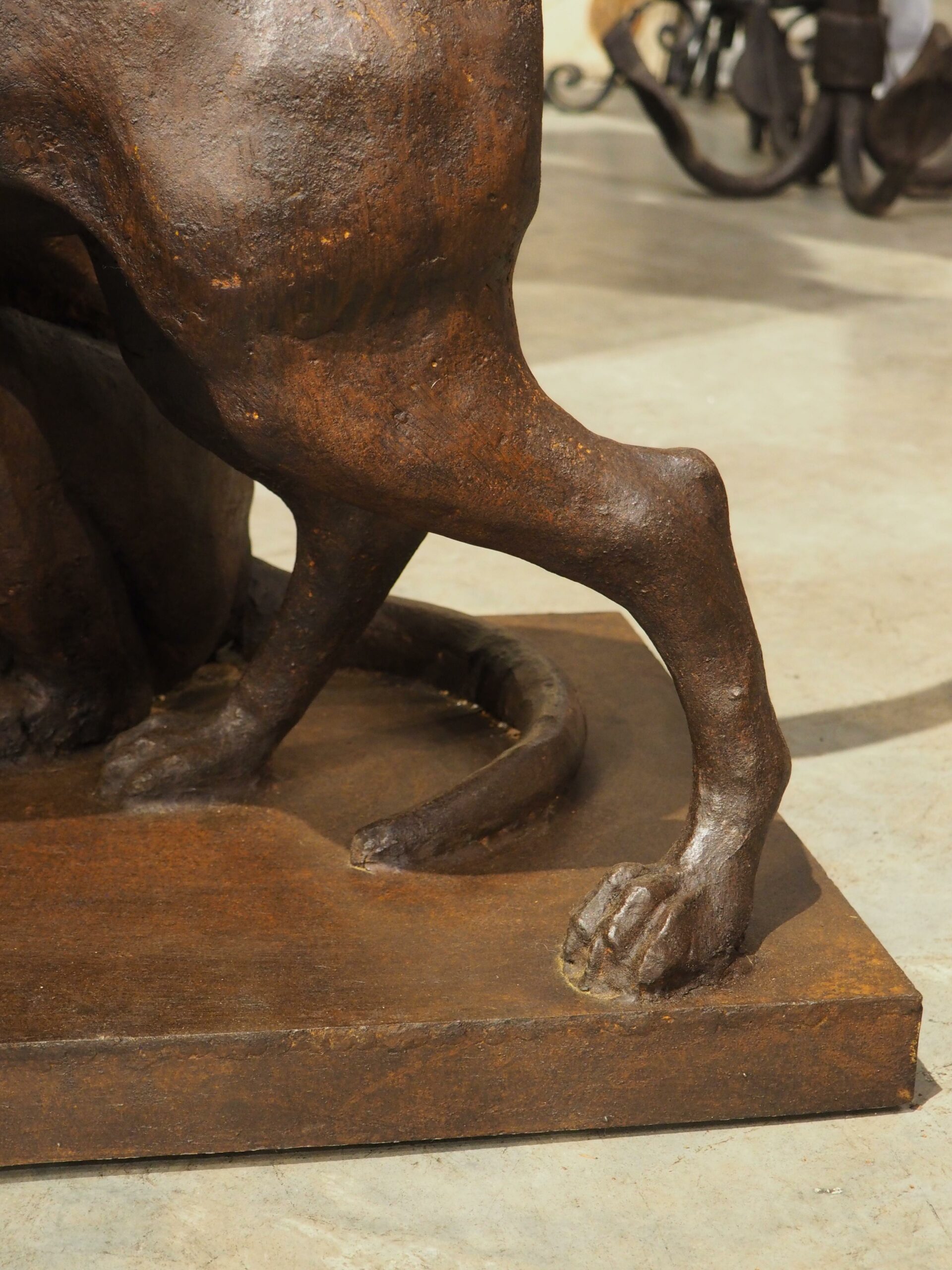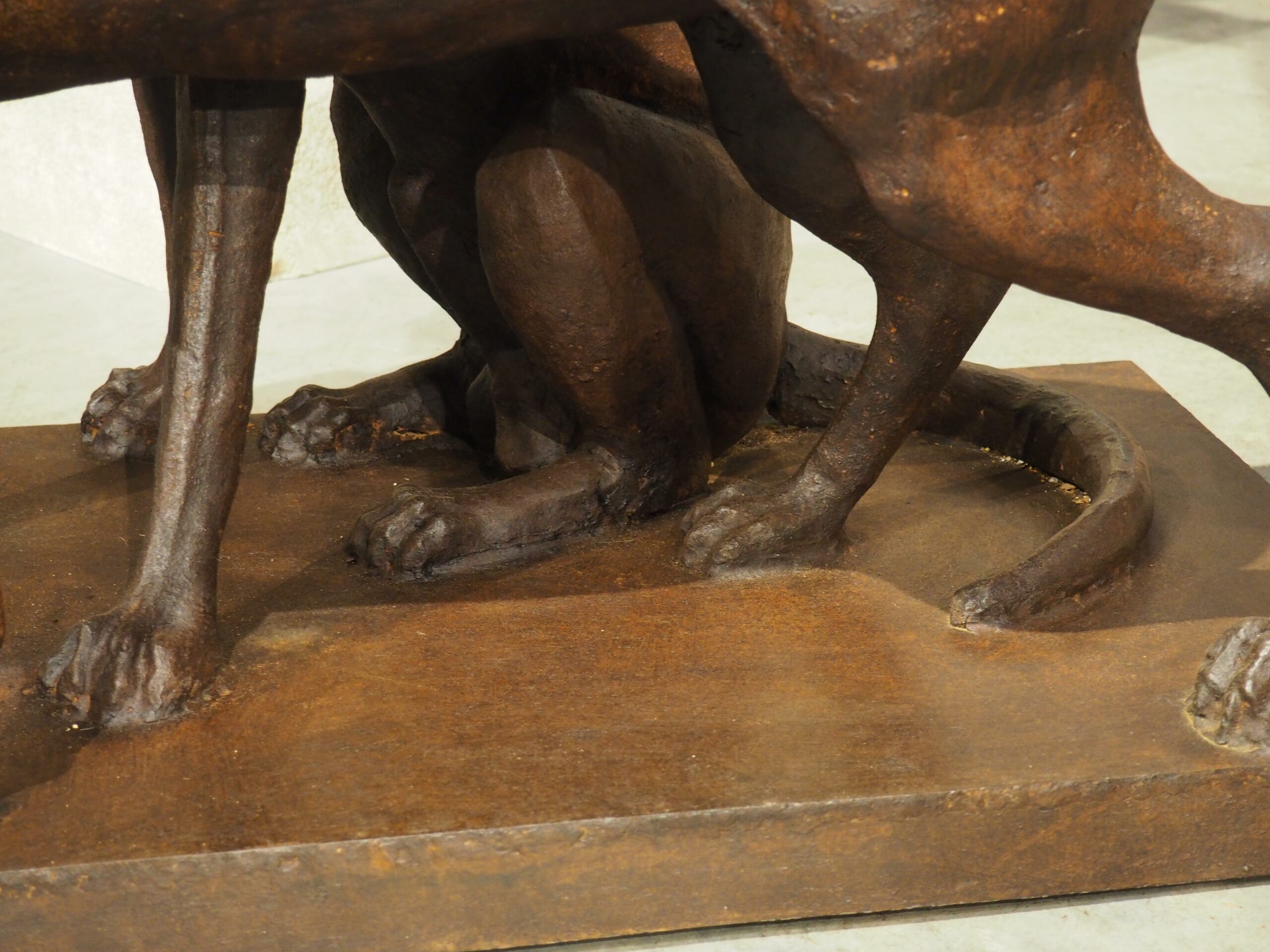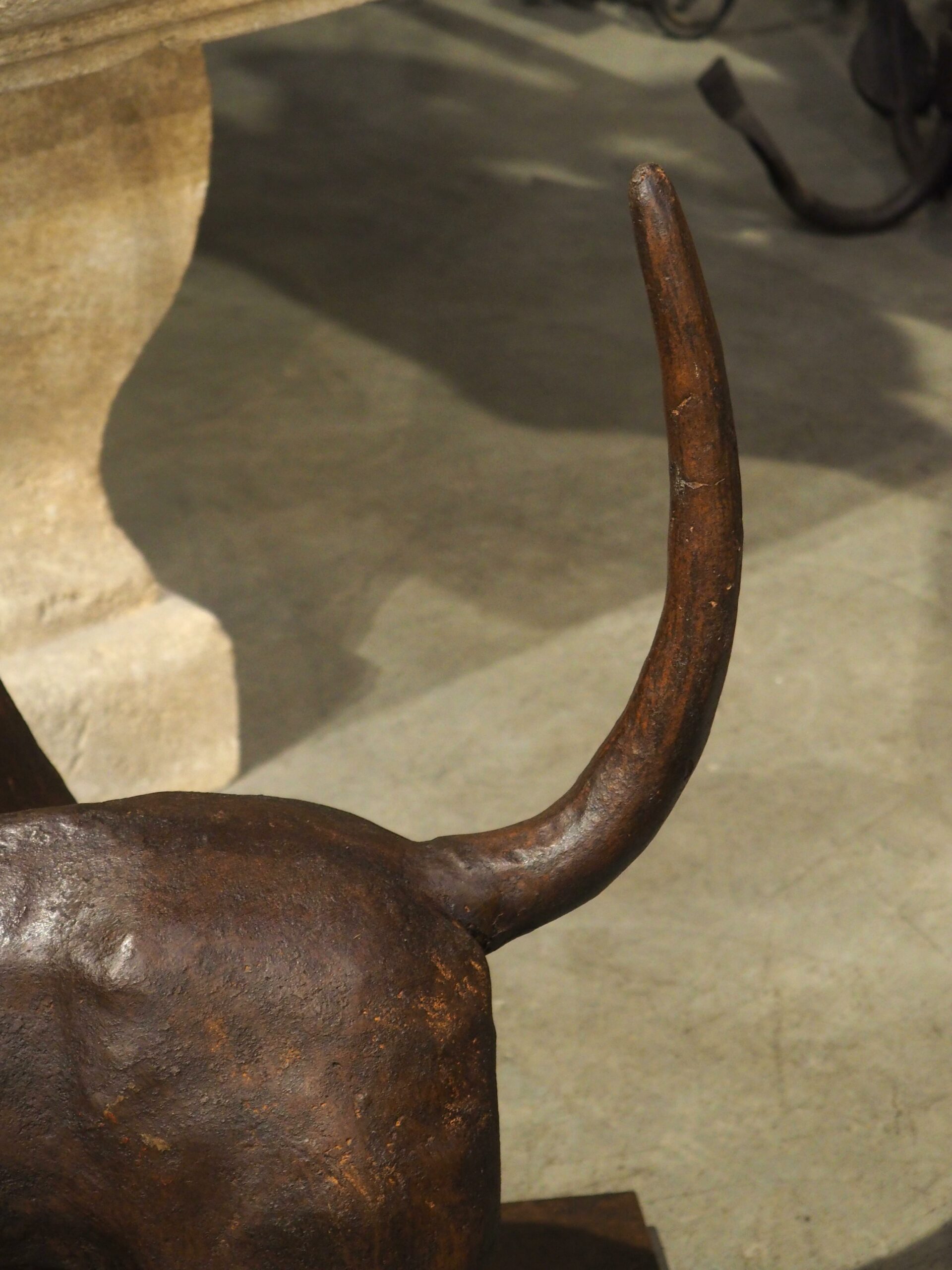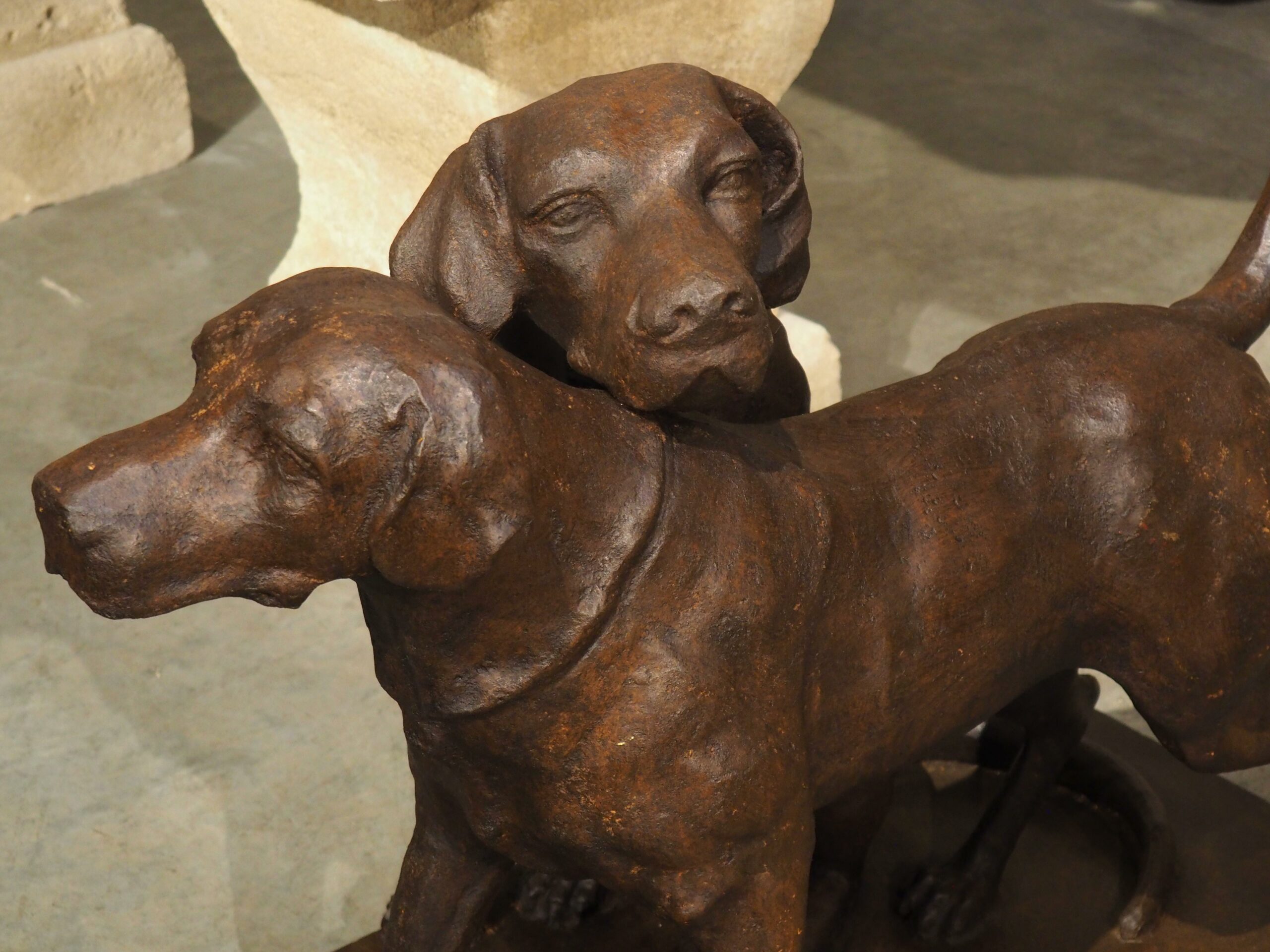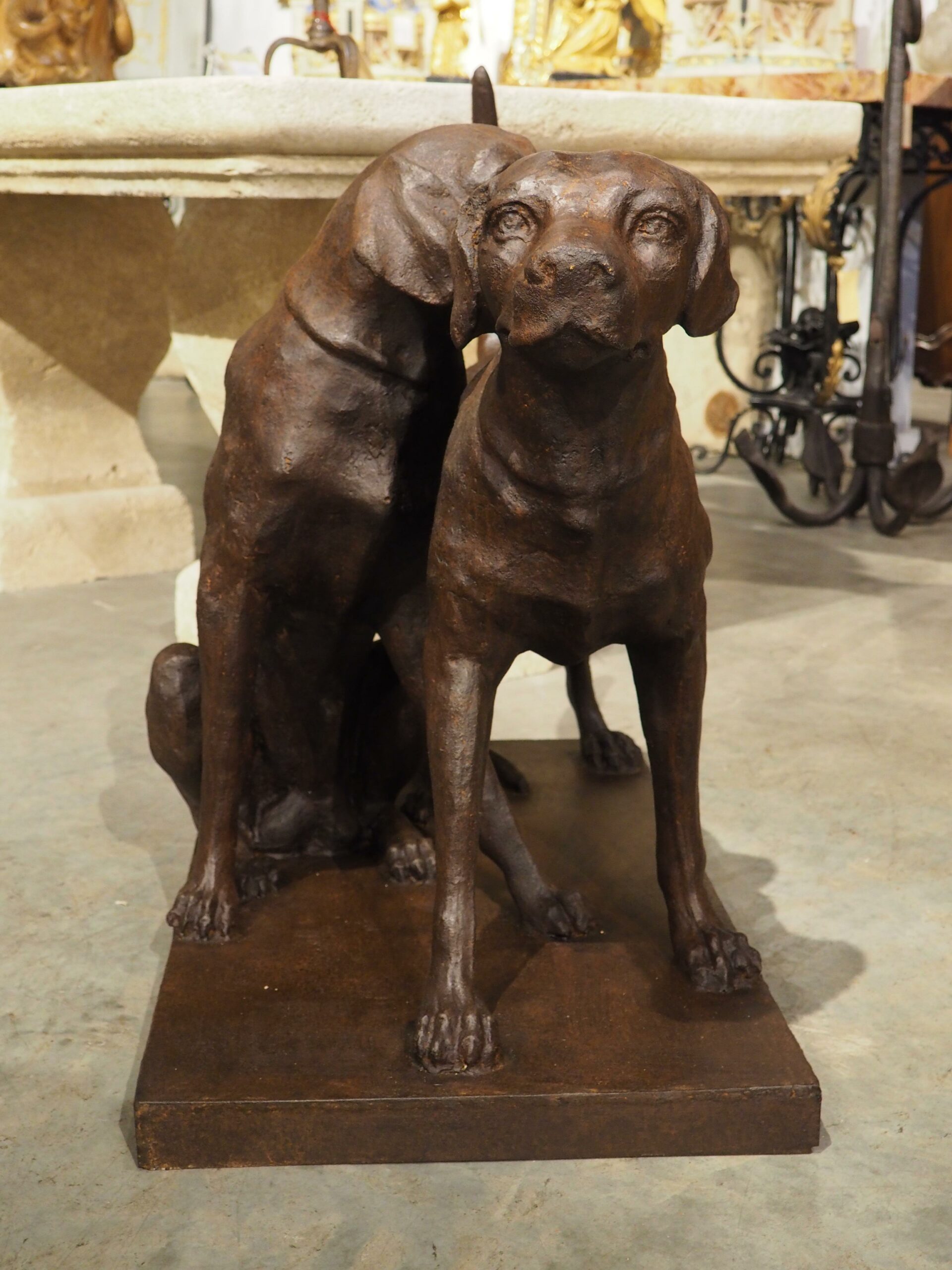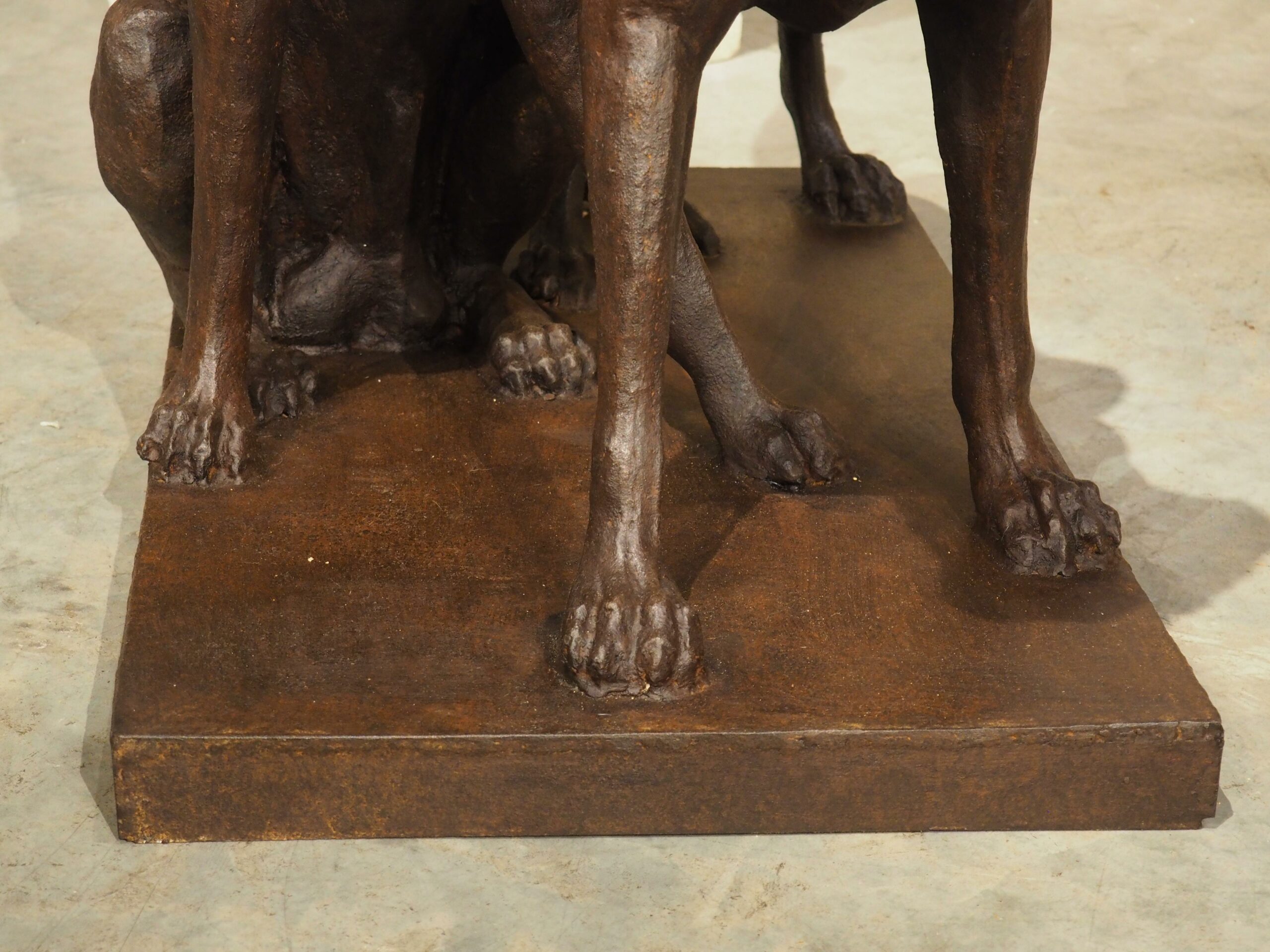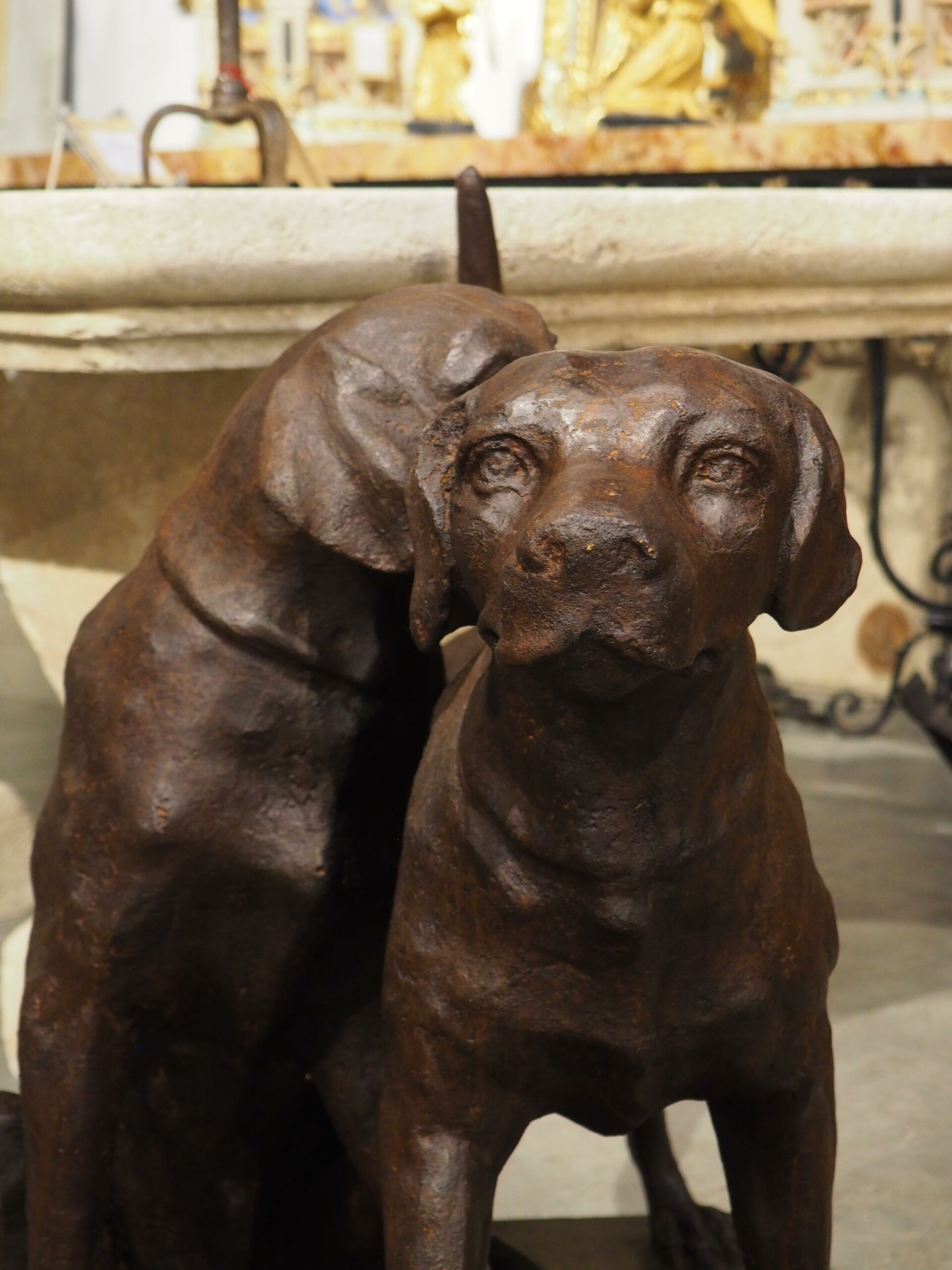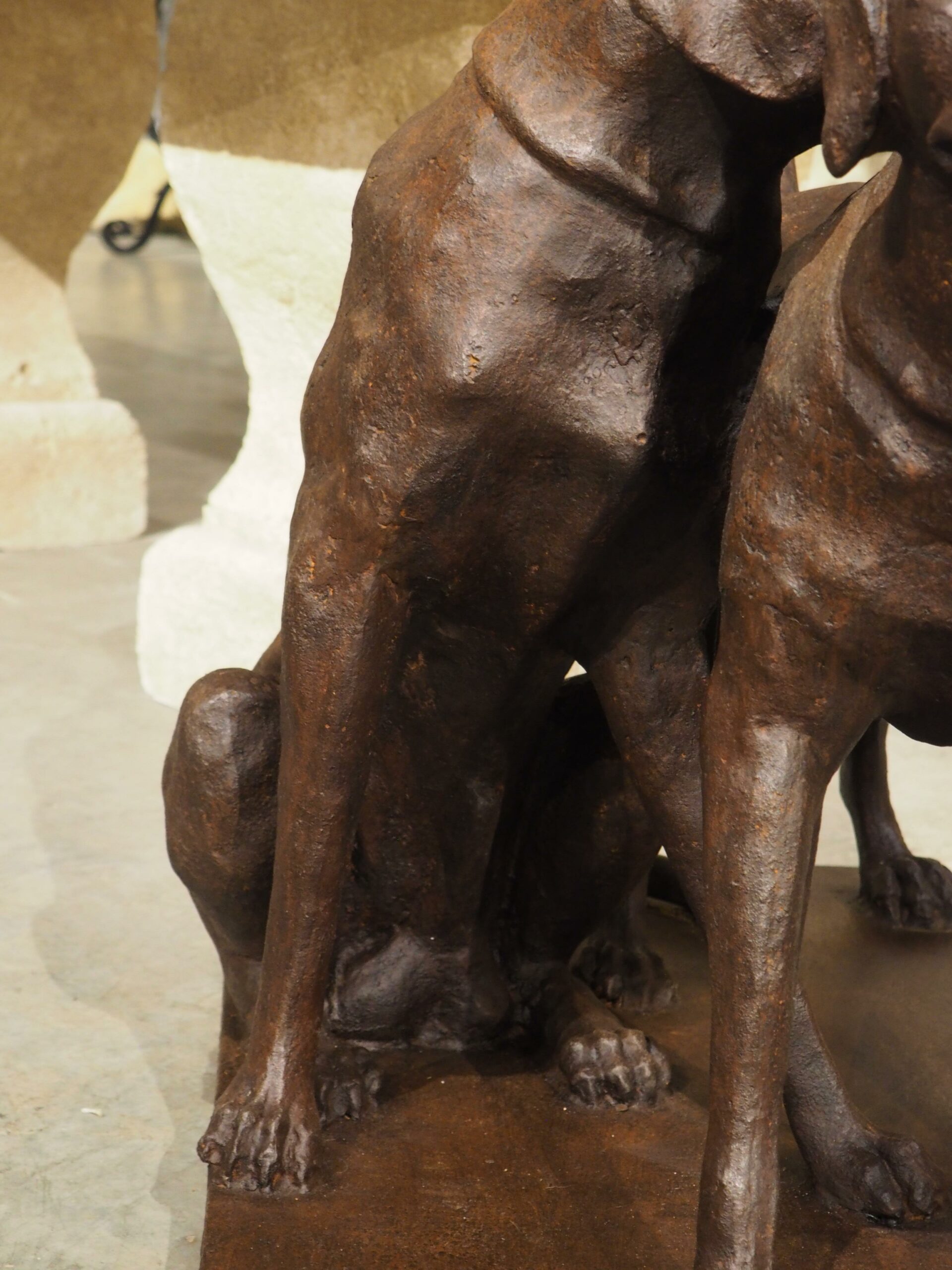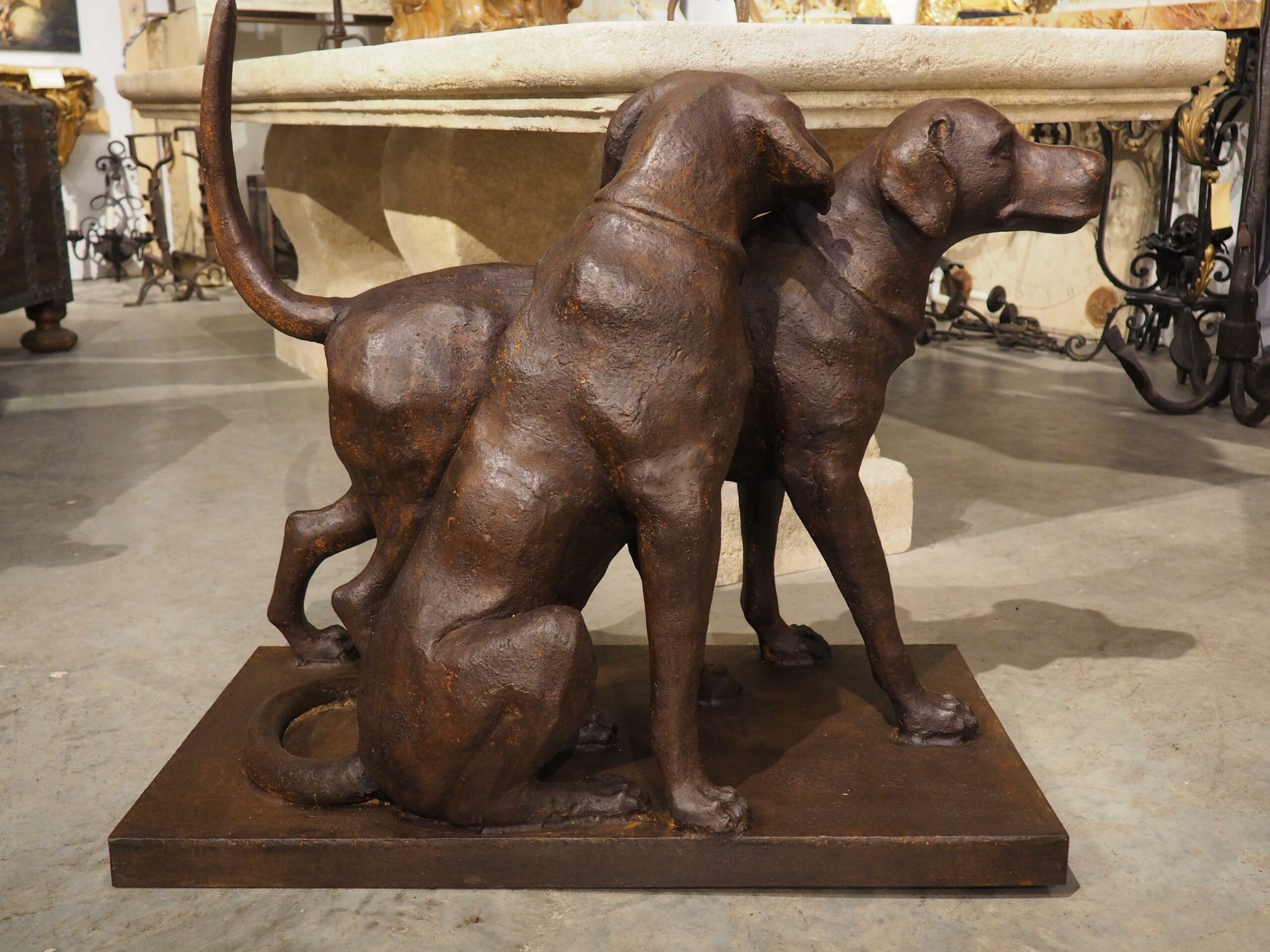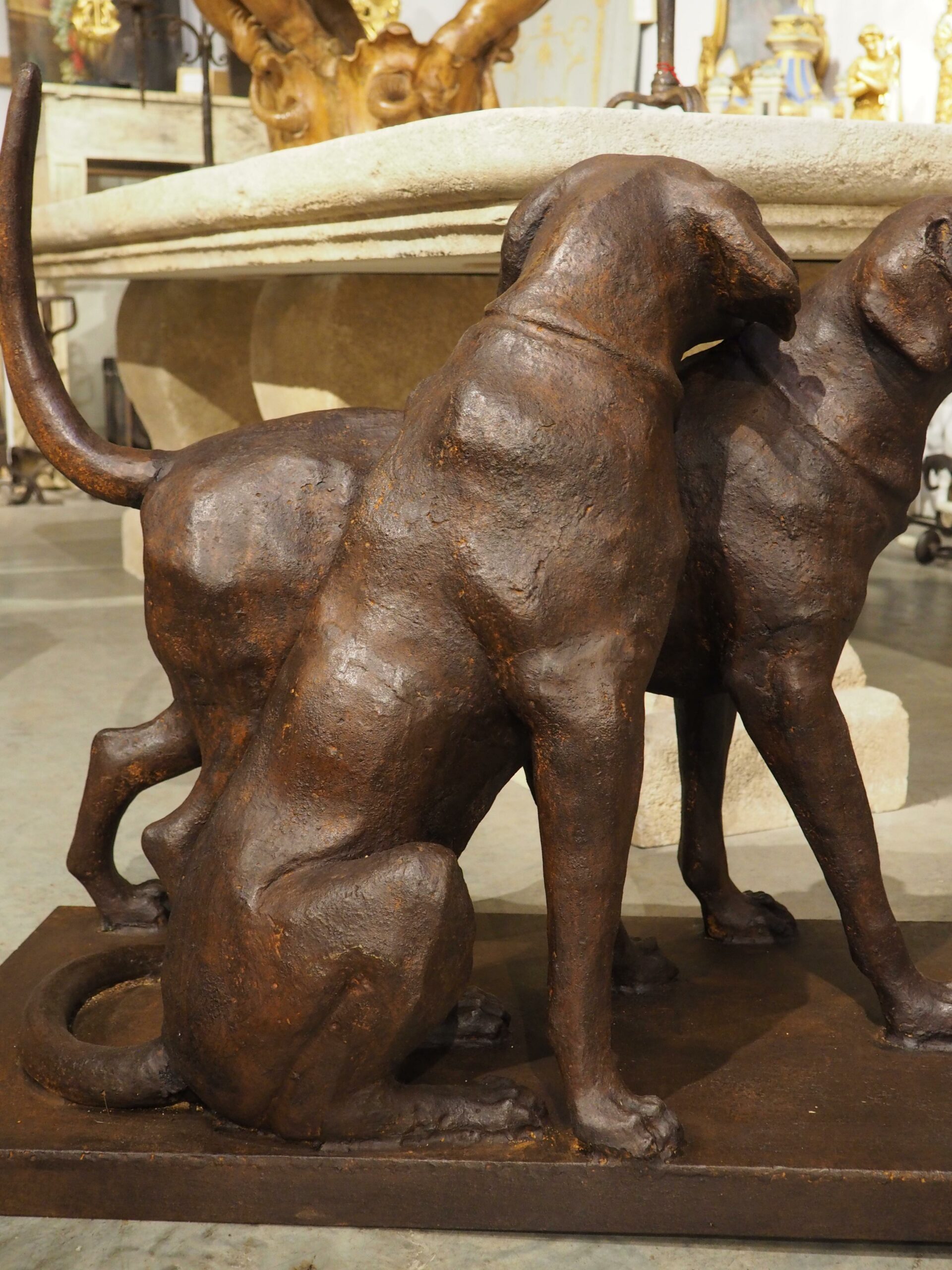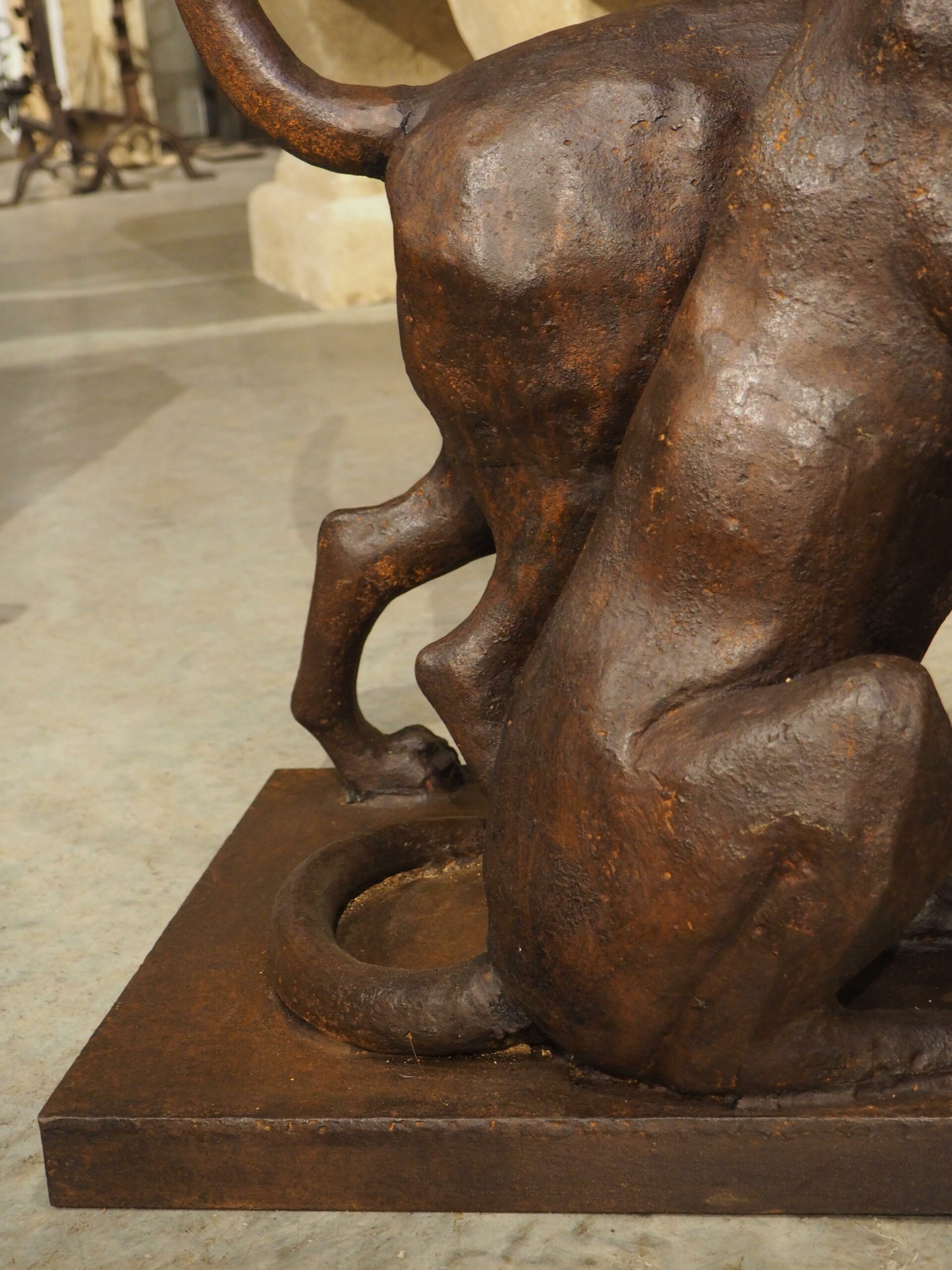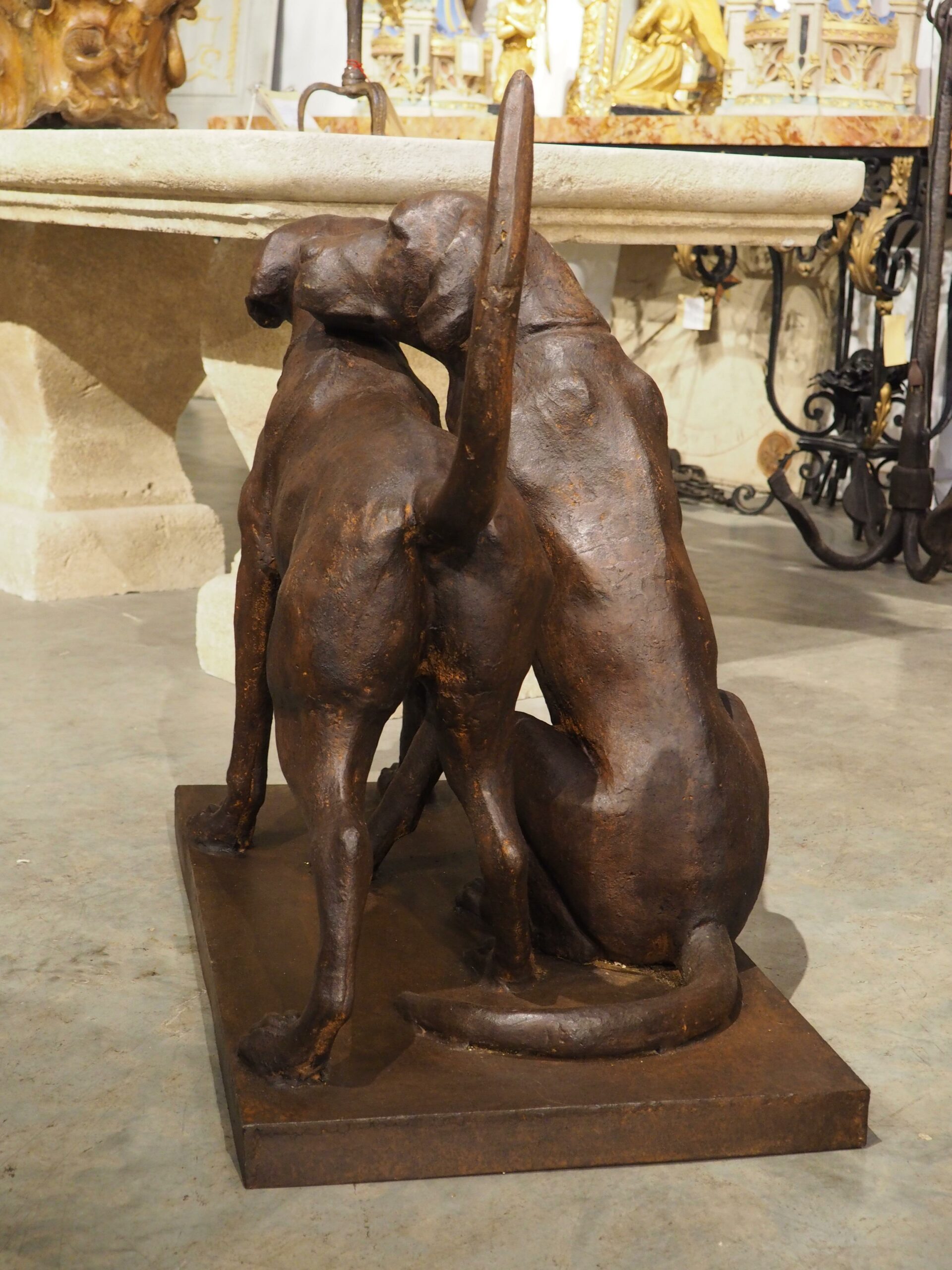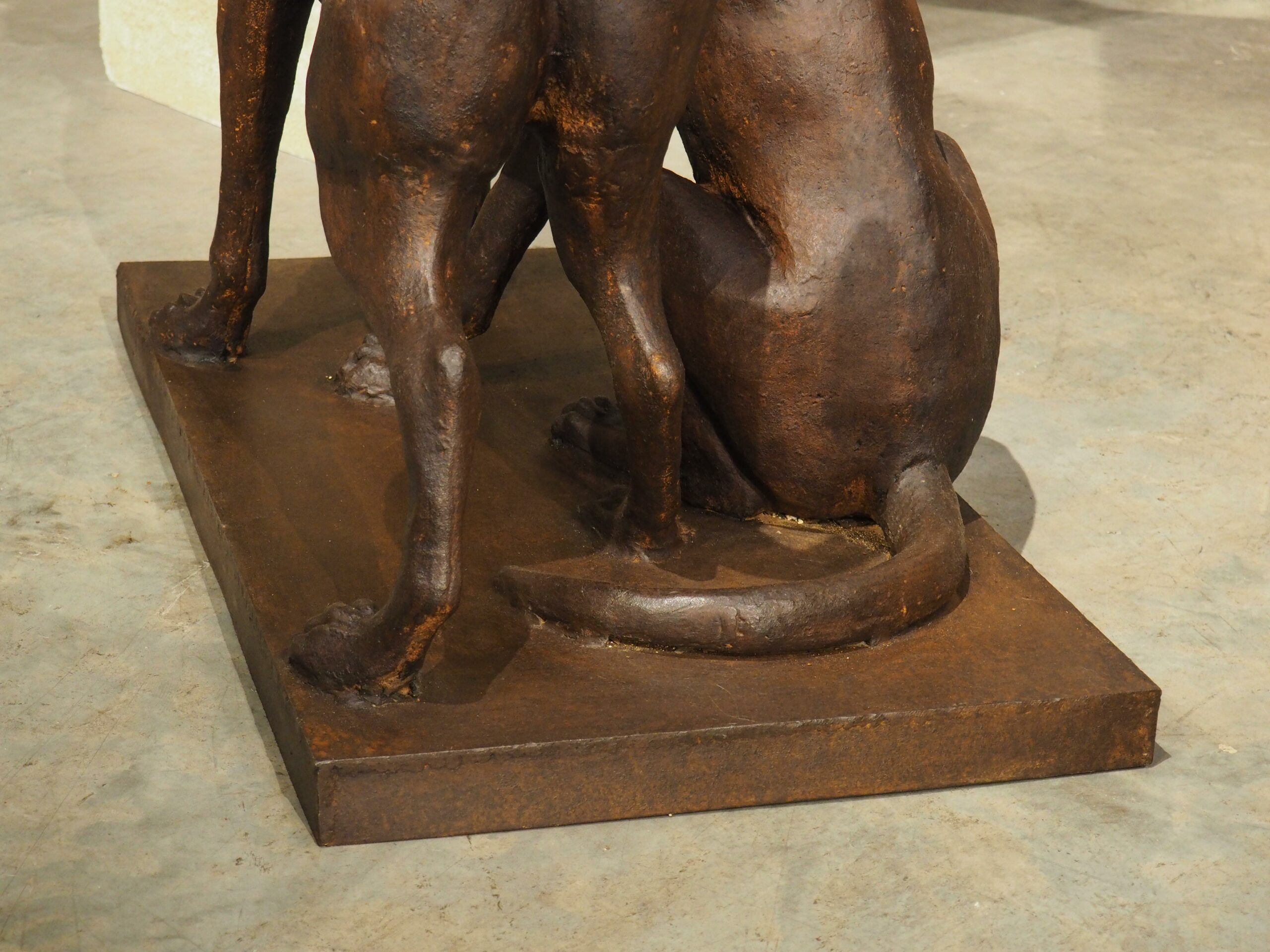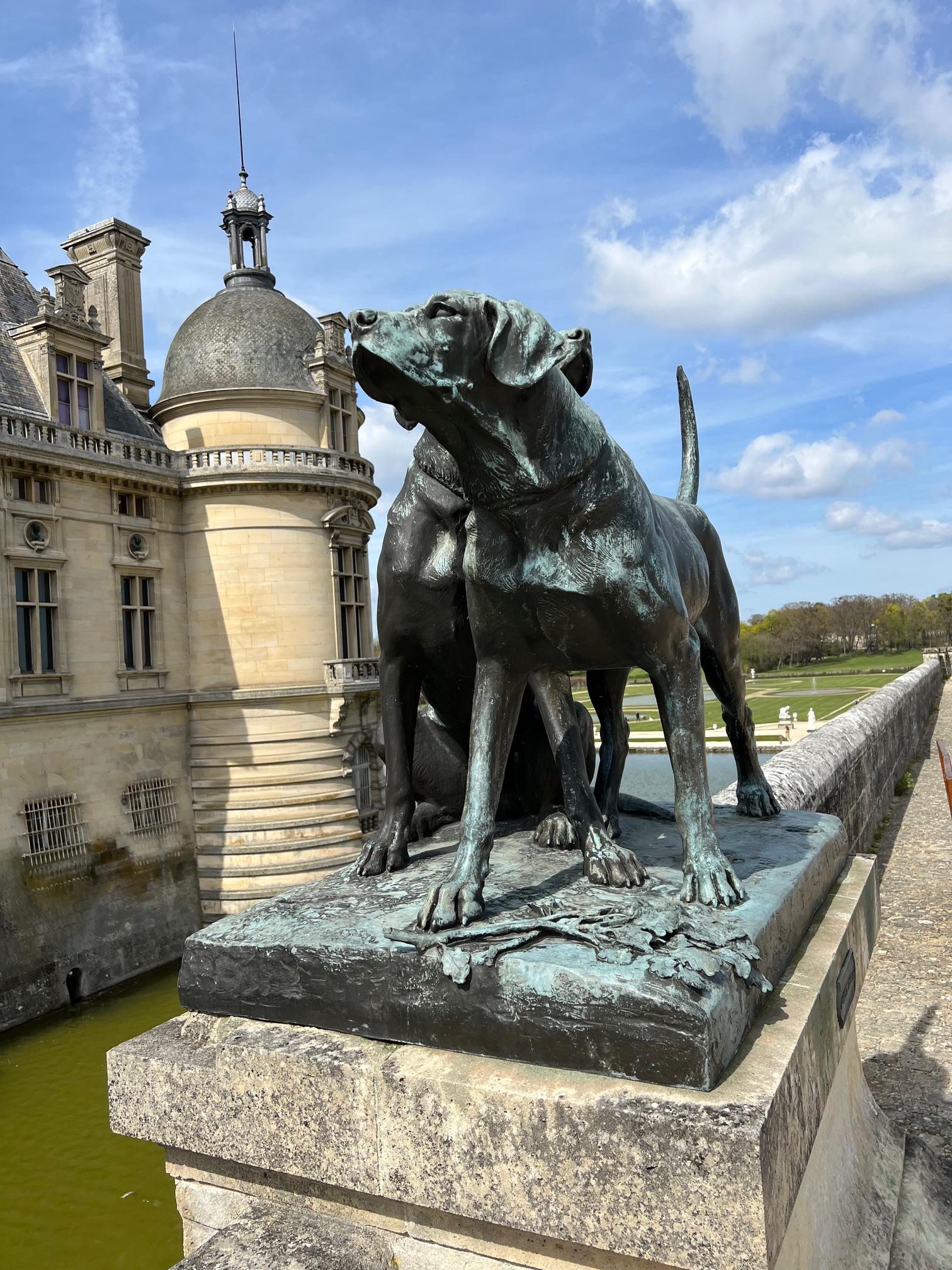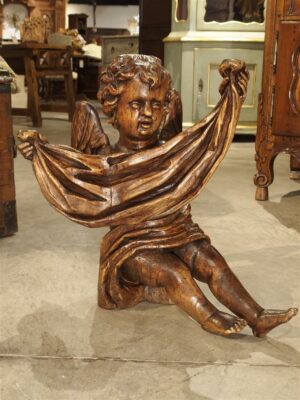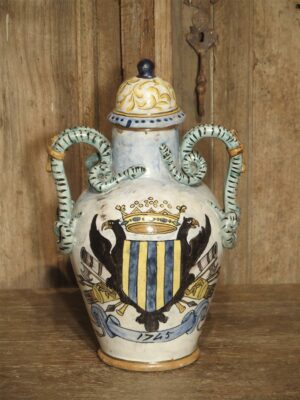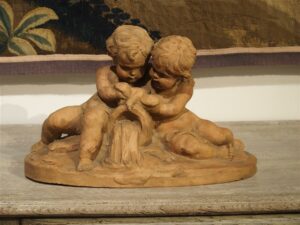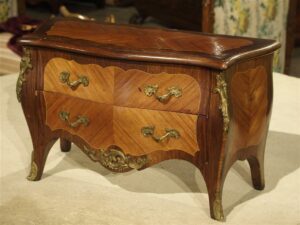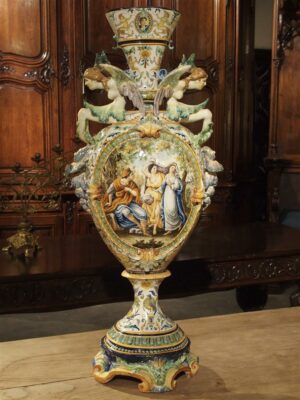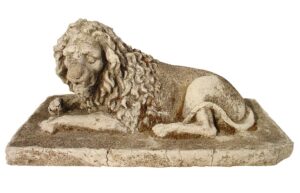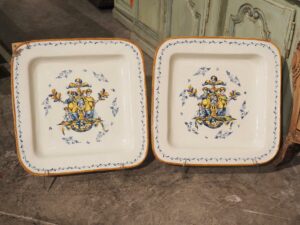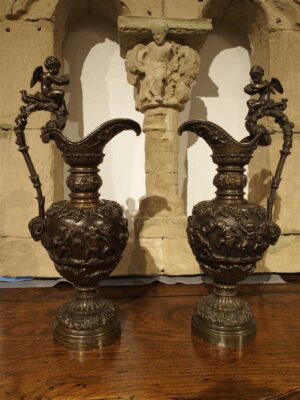The entrance to the castle of the famed Château de Chantilly is flanked by two colossal statues of hunting dogs, both commissioned by Henri d’Orléans, Duke of Aumale, and completed by Auguste Cain in 1880. Our cast iron statue, a relatively recent creation, is after the statue on the right side of the entrance (the original can be seen in situ in the final detail photo), reduced to a life-size scale.
A pair of English Foxhounds mixed with Chien du Haut-Poitou, named Seduisant and Lumineau, are depicted on a two-inch thick rectangular base. Lumineau, the female, is standing with her long tail raised, gazing into the distance. Seduisant, a male, is seated next to his partner, with his head resting on Lumineau’s upper back. The iron has a rich chocolate patina, with some light traces of oxidation, allowing the statue to be placed inside or in an outdoor setting.
Seduisant and Lumineai were two dogs owned by the Duke, who was the second youngest son of King Louis Philippe. Henri was a noted art and antiques collector, donating his entire collection to the Institut de France, with the stipulation that no item could ever leave the chateau. The Musée Condé, located within Chateau de Chantilly, is the summation of his pursuit of the arts and is the second-largest collection in France.
Auguste Cain was born in Paris in 1821 and is considered the preeminent sculptor from the Animaliers School, having studied under Rude, Guionnet, and Pierre-Jules Mêne. For the latter part of Cain’s career, he focused on large scale monuments, such as the pair of hunting dog statues at Chateau de Chantilly. Today, the works of Cain can be found all throughout the world, from Algeria to Scotland.
The cast iron dogs seen here were recently purchased from a property outside of Orleans, France, and were made within the past 20 years.
CONDITION: Very good condition with fleabites and minor buildup. Areas of oxidation visible beneath a coat of French wax that has been applied to the iron.



